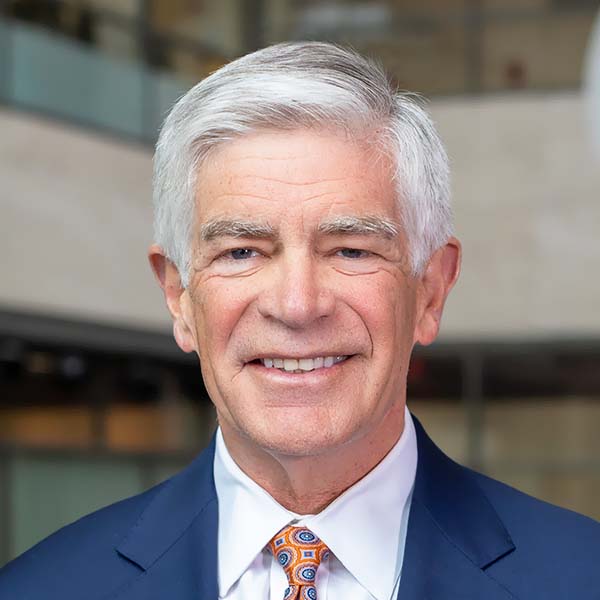Perspective brings you thoughts and insights from Bank experts, focusing on the latest research, trends, and issues facing the economy of the Third District and beyond.
In 1977, Congress handed the Federal Reserve a crucial charge: promoting stable prices and maximum employment. This dual mandate is central to our work, not just because it is part of our statutory underpinning but because it would be impossible to achieve our goal of a strong and stable economy without it. Much has been said and written in recent months and years about our efforts to tame inflation. Not as much as been offered about the maximum employment part of our mandate, which I will focus on here.
Using a strict definition, maximum employment is the highest level of employment the economy can sustain to maintain stable inflation (which the Federal Reserve describes as 2 percent annually). However true this definition is, I take a perhaps more nuanced view. To me, the quantity of available jobs is important, but so is the quality of those jobs. I would venture to guess that an individual working in a job that doesn’t take full advantage of their education or skills, or in which they aren’t as productive as they believe they can be, would not consider themselves to have achieved their own maximum employment.
Neither would I.
Understanding how workers reach their fullest individual potential is the subject of much research at the Philadelphia Fed. But we are also focused on providing tools that can help workers chart paths to their own maximum employment.
The Worker Voices Project is an area of research that I wrote about previously. To recap, the Philadelphia Fed, along with researchers from across the Federal Reserve System, led a series of focus groups with workers and job seekers without a four-year degree in the post-pandemic economy. We wanted to better understand the reasons behind workers’ employment decisions. While much of our historical understanding of the labor market has been conducted by surveying employers — from which we can only infer reasons why workers take the jobs they do — the Worker Voices Project has created a much fuller understanding by listening directly to the perspectives of workers.
Recently, the authors of the Worker Voices Project released a toolkit for others who may want to build upon their qualitative research or investigate another economic topic using similar methods. The toolkit includes important insights for others undertaking community-based research, and it is detailed step-by-step to ensure interested individuals and organizations can make the most of these insights — from the recruiting and vetting of participants, to the design of questions, to the role partnerships with outside organizations can play in enhancing project awareness and credibility, among much more.
Using a common approach can do more than just streamline the research process. Data drawn from studies using similar research methods can reinforce previous results or offer new conclusions. Stronger results, in turn, provide a better evidentiary basis for the crafting and implementation of policy solutions. Moreover, as the researchers on the Worker Voices Project realized, even minor changes in how a question was posed could lead to much more detailed — and therefore valuable — responses.

But our effort cannot be limited to better understanding the academic meaning of maximum employment. We also want to empower workers with tools to chart their own course to maximum employment.
In 2021, the Philadelphia Fed partnered with the Federal Reserve Bank of Cleveland to launch the Occupational Mobility Explorer, a tool that helps users visualize an upwardly mobile career path based on the skills they bring to the workplace. With some recent enhancements, the explorer now provides a glimpse into nearly 600 job titles across more than 500 metro and nonmetro areas of the United States, using data drawn from millions of job advertisements. Users can also target their dream position and then work backward to identify the skills they would need to acquire across their career journey to achieve that goal.
For example, a home health aide currently working in Allentown, PA, with a dream of becoming a registered nurse can see how building upon their current skill set can get them to that goal. The explorer also provides information about the expected wage increase and expected future job demand in that region for each step up the opportunity ladder. And it also provides access to job postings in a local labor market so job seekers can see employment opportunities available nearby.
The tool offers many roles to explore, including opportunity occupations, which typically do not require a four-year degree and pay above the national median wage. Additionally, it was developed based on research that found where skills overlapped across multiple job postings. Using this overlap to create a career ladder is the difference between charting one’s upward mobility and a worker feeling locked into a specific job. Some employers are also putting a greater emphasis on skills and experience over a credential, which, for applicants without a four-year degree, can open more doors to positions that can turn into fulfilling and prosperous careers.
The Worker Voices Project and Occupational Mobility Explorer are far from the only research going on at the Philadelphia Fed aimed at expanding our knowledge of labor markets. We continue, for example, to examine the ongoing existence of the nationwide gender gap in wages. And we will continue our monthly surveys of Third District employers, which are critical to uncovering trends right here in our region.
But it all comes back to the crucial, and often delicate, balance of seeking both aims of our dual mandate.
It may be tempting to see employment data as simply numbers and trends. But it is in looking behind the figures — into the rich diversity of faces and skills behind those numbers — that can lead to a fuller understanding of what it means to achieve maximum employment.
- The views expressed here are solely those of the author and do not necessarily reflect the views of the Federal Reserve Bank of Philadelphia or the Federal Reserve System.

